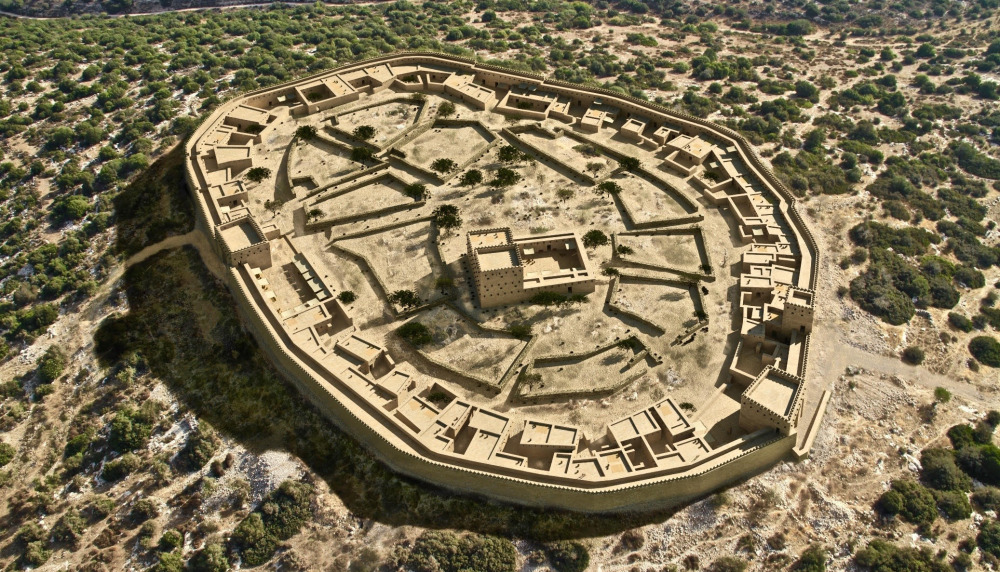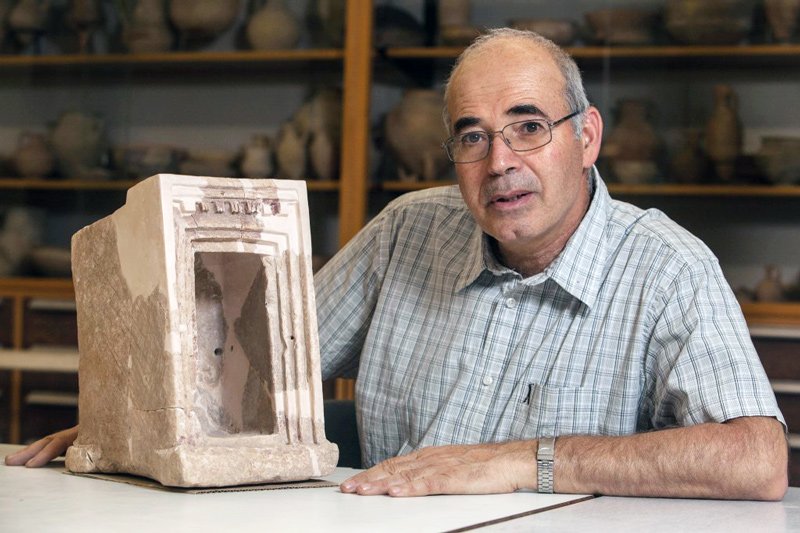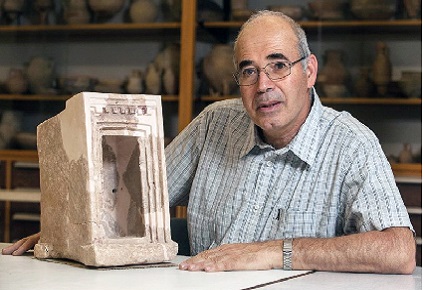Khirbet Qeiyafa is a hill-top site about twenty miles southwest of Jerusalem. The hill overlooks the famous Valley of Elah (where David fought Goliath) and was long suspected to contain the remains of an Iron Age settlement beneath its hills. Excavations, beginning in 2007, confirmed the hunch of Yosef Garfinkel, an archaeologist at the Hebrew University of Jerusalem and director of the digging at Khirbet Qeiyafa. A massive fortress and city were discovered during the first season of digging, which was subsequently dated to the late 11th century BC (c. 1020-980). Though there was initially some debate on what ethnic group dwelt in the fortress, continued research suggested that Khirbet Qeiyafa was an Israelite settlement affiliated with the Judean monarchy. The evidence was controversial, as modernist scholars had denied the existence of a united kingdom, or at least downplayed its importance, suggesting the united monarchy consisted of little more than a loose confederation of bandit-tribes. Khirbet Qeiyafa—a massive fortress that could have only been constructed under a powerful, centralized monarch—challenged these presuppositions.

But this essay is not about the dating or ethnographic considerations of the site. Rather, we shall focus narrowly on several stone objects described as “shrines” which were found at the site in May, 2012. The shrines were discovered in three large rooms that appeared to be centers of religious worship. The shrines, according to Garfinkel, support not only his contention that Khirbet Qeiyafa is an Israelite site, but also demonstrate the Israelite prohibition of religious images:
“Over the years, thousands of animal bones were found [at Khirbet Qeiyafa], including sheep, goats and cattle, but no pigs. Now we uncovered three cultic rooms, with various cultic paraphernalia, but not even one human or animal figurine was found. This suggest that the population on Khirbet Qeiyafa observed two biblical bans—on pork and on graven images—and thus practiced a different cult from that of the Canaanites or the Philistines.” (1)
The “shrines” are box-like containers made of stone or clay. The Hebrew word for these boxes is aron, similar to the word for Ark, which simply denotes a box or container. The boxes, pictured below, contain an intricate façade featuring two pillars, guard lions, and birds upon the roof. This imagery—the two pillars, lions—appeared also in Solomon’s Temple; the boxes also have recessed frames, as did the Temple of Solomon (cf. 1 Ki. 6:4, 7:15, 7:29).

It should be noted that while Israelite law prohibited graven images of humans and statues of animals for cultic veneration, engraved images of animals for decorative purposes were not forbidden, as we see in the case of Solomon’s Temple. The shrines of Khribet Qeiyafa demonstrate this: while there are no human or animal statuary, the shrines do contain engravings of animals, plants, and similar images taken from nature, as found in Solomon’s Temple. Taken with all of the other evidence found at the site, the shrines of Khirbet Qeiyafa seem reflect Israelite religion rather than the polytheism of the Canaanites.
What was the purpose of the little “shrine” boxes? Scholars are divided, with some even denying that these artifacts are Israelite at all. But among those who do affirm the Israelite origin of the boxes, the consensus seems to be that they held oil lamps used in Israelite worship.
What is the significane of the finds at Khirbet Qeiyafa? It must be recalled that according to the Documentary Hypothesis of the modern biblical critics, monotheism in Israel did not arise until during the period of the prophets and was not firmly established until after the Exile; the same goes for the Second Commandment’s prohibition on images. If the finds at Khirbet Qeiyafa demonstrate the observance of the ban on cultic images of humans and animals as late as 1000 B.C., the Documentary Hypothesis loses credibility.
Judging from an archaeological time frame, excavations at Khirbet Qeiyafa have only just begun. No doubt this fortress of the early kingdom period will continue to yield fascinating finds into the future.
(1) Alan Boyle, “3,000-year old artifacts reveal history behind biblical David and Goliath”, NBC News, May 8, 2012. Accessed online at: http://www.nbcnews.com/science/science-news/3-000-year-old-artifacts-reveal-history-behind-biblical-david-f761720
Phillip Campbell, “The Shrines of Khirbet Qeiyafa,” Unam Sanctam Catholicam, August 8, 2014. Available online at: www.unamsanctamcatholicam.com/the-stone-shrines-of-khirbet-qeiyafa

